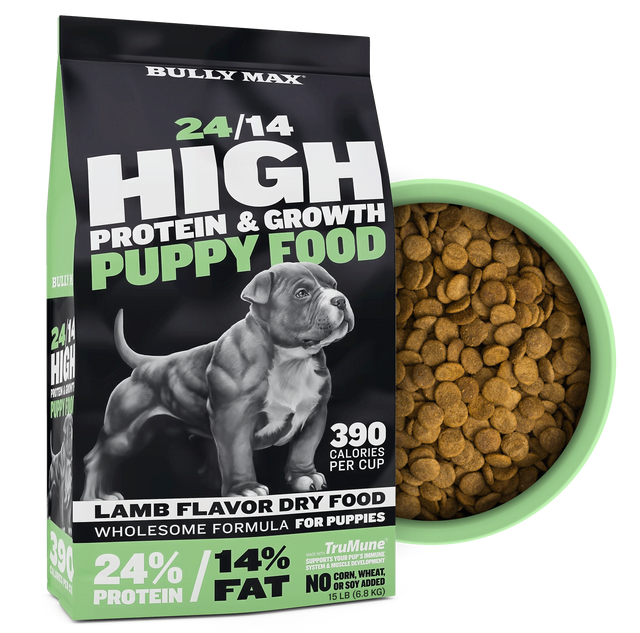Dog Food Ingredients to Look for & Ingredients to Avoid
Many dog owners have asked us for dog food ingredients to look for and ingredients to avoid. They often wonder if they are giving the best dog food to their pets. With the advent of modern advertising, the variety of choices overwhelm owners making dog food selection a research-based decision. It is not surprising given that most owners have been conscious about their pet’s nutritional needs over the years.
In this article, you will learn how to effectively analyze the quality of the dog food by checking the first five ingredients. Before we get to that, you must know the nutritional requirements of dogs, understand food labels and learn the different food ingredients. Make sure to finish the article to find out if you have chosen the right dog food for your pet.
Nutritional Requirements of Dogs
Research has proven that dogs are omnivores and are required to have a balanced diet composed of animal and plant ingredients. This is in contrast to the popular belief that they are carnivores because they fall under the order Carnivora. In fact, feeding solely pure meat or vegan diets may be detrimental to most dogs.
Healthy, and well-balanced diet for dogs must include nutrients that provide: amino acids from proteins, fatty acids and carbohydrates, vitamins, minerals, and water. The specific requirements for each of these nutrients depend on the dog’s size, its breed, and its stage in life, among other factors. For instance, a pregnant dog will have a different nutritional requirement from an adult dog.

Proteins
Proteins are the building blocks of muscle. This nutrient also helps build and maintain fur, skin, nails, tendons, ligaments, and cartilage. Protein is also important in hormone production.
Carbohydrates
Carbohydrates serve as energy sources. This nutrient in the diet allows protein to be spared for producing and maintaining body tissue, rather than being used for energy production.
Fatty Acids
Fatty acids are utilized by the dog's body for energy consumption. This nutrient has a higher caloric value than protein and carbohydrates. Fatty acids are also important in the absorption and digestion of fat-soluble vitamins.
Vitamins
Depending on the type of vitamin, these nutrients are beneficial for the heart, liver, kidneys, eyes, and immune system. With the right balance and amount, these help to promote the overall well-being of the dog.
Minerals
These nutrients are used for bone development, nerve and muscle function, balancing of fluid in cells, thyroid function, skin and coat maintenance and red blood cell production. Just like vitamins, these help maintain the overall health.
Water
Considered an essential nutrient, water is essential for maintaining the balance of bodily fluids, regulating body temperature, and flushing out toxins from the body. It also contains electrolytes necessary for the body.
Understanding Food Labels
According to the AAFCO, a pet food label has eight required items. These are as follows.
Brand and Product Name
The brand and product name distinguish the product in the market. There are rules when it comes to having product names approved. The percentage of ingredients is one determining factor.
Name of Species for which the pet food is intended
Whether the product is intended for dogs or cats, the specification is placed somewhere in the principal display panel. It is commonly stated in the product name or description.
Quantity Statement
This is defined as the net weight or net volume of the product. This is expressed in the correct units and placed on the lower third of the principal display panel.
Guaranteed Analysis
All dog food labels must provide a guaranteed analysis to advise the purchaser of the product's nutrient content, according to the AAFCO. The analysis must provide guaranteed minimum percentages of crude protein and crude fat, and maximum percentages of crude fiber and moisture. For a dog food to be claimed as complete and balanced, it must meet or exceed the AAFCO’s minimum requirements.
| Nutrient | Units DM Basis | Adult Maintenance Minimum |
Growth & Reproduction Minimum
|
Maximum
|
| Crude Protein | % | 18.0 |
22.5
|
-
|
|
Crude Fat |
% | 5.5 | 8.5 | - |
|
Crude Fiber |
% | - | - | 5 |
Ingredient Statement
According to AAFCO, ingredients must be listed in order of predominance by weight. In simple terms, the ingredient that makes up the highest percentage of the total weight is listed first.
Nutritional Adequacy Statement
This is an important statement that indicates the food is complete and balanced for a particular life stage. These life stages may include “Growth”, “Reproduction”, and “Adult Maintenance”. Dog food labeled for “All Life Stages” meets the nutritional needs for both “Adult Maintenance” and “Growth/Reproduction.” Some products, like treats, may also be intended for intermittent or supplemental feeding only.
Feeding Directions
All pet foods labeled as complete and balanced include a feeding direction. This is usually stated as the amount of product per weight of an animal. The frequency of feeding is also included.
Name and Address of Manufacturer or Distributor
This information is usually placed conspicuously either in the front or back display of the product. Aside from the name, the city, state and zip code of the manufacturer are shown. This is distinguishable by the phrases “manufactured for:” or “distributed by:”.
The Ingredients of Dog Food
There are a myriad of ingredients a manufacturer may choose from to formulate a diet that meets the nutritional needs of a dog. This is true for the sources of proteins, carbohydrates and fats. These macronutrients also comprise the bulk of the dog food, thus the first five ingredients.
Protein Sources
Protein can be sourced from animal or plant ingredients. Common animal-based protein sources include chicken, lamb, fish, and beef. There are a variety of plant-based protein sources including corn and soybean. However, animal-based ingredients provide the highest quality protein sources.
Types of Protein Sources
- Whole Meat - a raw protein ingredient that has not been mixed (e.g. whole chicken).
- Meal - a rendered whole meat of a single source (e.g. chicken meal).
- Meat Meal - rendered whole meats without a specified source
- By-Product Meal - rendered organ meats and other edible parts of an animal
In general, whole meats and meals are ideal protein sources in dog foods. The main difference between the two is the rendering process involved in meals to remove moisture as opposed to whole meats. Because a meal is dehydrated, it becomes a highly concentrated protein source and moisture does not account for most of its weight.
Carbohydrate Sources
Carbohydrates are major energy sources and are commonly sourced from cereal grains. Some sources of carbohydrates include brown rice, sorghum, barley, oats, wheat and corn. It is important to have a good source of carbohydrates because it also serves as a fiber source important for optimum digestion.
Fat Sources
Just like proteins, fats can be sourced from animal or plant ingredients. Chicken and beef fat provide a lot of triglycerides and arachidonic acid essential as energy sources. Fish oil and vegetable oils provide omega-3 fatty acids and omega-6 fatty acids, respectively.
Why the First Five Ingredients Matter
As mentioned earlier, the way the ingredients are listed is based on their weight with the heaviest ingredient being the first. This simply means that the first five ingredients comprise the bulk of a dog food product. Here are some tips when checking the first five ingredients.
- A high-quality protein source should be on top of the list. This may include whole meats or meals. For wet dog foods, whole meat (e.g. “whole chicken” or simply “chicken”) is preferred while meals (e.g. “chicken meal” or “lamb meal”) are appropriate for dry dog food. Animal by-products or unspecified meat meals in the first five ingredients is a red flag.
- Good sources of carbohydrates must be in the first five ingredients. Whole grains (e.g. brown rice or oats) are excellent carbohydrate sources. Because these are whole grains, they will also provide beneficial fiber to the dog.
- Animal fats should be in the first five ingredients. Excellent choices for animal fats as ingredients are chicken fat and beef fat. Fish oil and vegetable oils are secondary fat ingredients and should be listed lower down the list.
- Artificial ingredients such as dyes, flavors and harmful additives must be absent in the first five. Dyes can be listed as “caramel color”, Blue 2, Red 40, and Yellow 5 and 6 while additives may include BHA, BHT and ethoxyquin.
- Potential allergens for your dog must not be in the list. If your dog is allergic to chicken, it must not be in the ingredient list, let alone in the first five ingredients. This is why it is important to avoid products with mystery and unspecified ingredients.
These tips can only be applied to dog foods labeled as “complete and balanced”. Treats and other products meant to be given as a supplemental feed may have different ratios of macronutrients. Still, it is important to check these products for artificial ingredients and potential allergens.
Dog Food Ingredients to Look for & to Avoid

Why choose Bully Max Dog Food?
Bully Max 30/20 High Protein Dog Food is an excellent choice if you’re looking for a complete and balanced meal with high-quality sources of protein, carbohydrates and fatty acids in the first five ingredients. Its first ingredient is chicken meal which contains 300% more protein than fresh chicken. Brown rice is a whole grain and its source of carbohydrates together with beet pulp and sorghum. It is further fortified with chicken fat which is an excellent source of fatty acids. Lastly, it does not contain harmful ingredients such as artificial dyes, BHA, BHT and ethoxyquin.
Have you tried Bully Max products? Share with us your experience by leaving us a comment below.









